Gyeongsang Do 경상도, also known as Kyongsang-do, was one of the eight provinces of Korea during the Joseon dynasty. This province is located in the southeastern part of the peninsula, with its provincial capital now known as Daegu. The region holds historical significance as the birthplace of the Kingdom of Silla (57 BCE – 935 CE).
Gyeongsang-do adopted its present name in 1314, which is derived from the names of the principal cities Gyeongju (경주) and Sangju (상주). The province is further divided into two sub-regions: Gyeongbuk in the north and Gyeongnam in the south.


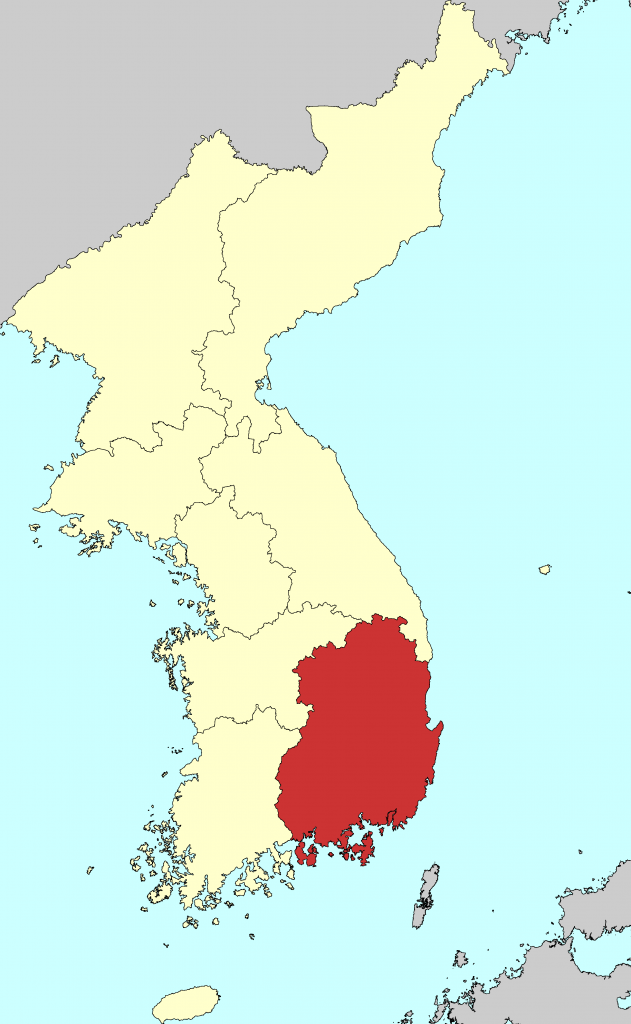

This is perhaps the most notable folk village in South Korea.
Gyeongsang-do is renowned for having a diverse array of bandaji, with a noteworthy aspect being their size. When compared to other provinces, bandaji from this region are typically smaller in size. They often feature minimal metalwork decoration to highlight the intricate wood grain patterns. Zelkova wood, known for its rich grain, was widely accessible in this province, but well-grained red pine was also utilized.
These bandaji are among the most sought-after by collectors and are considered some of the most popular types, alongside those from the neighboring Gyeonggi-do and Jeolla-do provinces.
Within the province, there is a noticeable distinction between the northern and southern regions. In the northern areas (Yeocheon, Sangju, Andong, Cheongdo), where the average temperature is lower and winters are longer, thicker clothing is common. Consequently, bandaji in these regions tend to be larger and resemble those from the neighboring province of Jeolla-do. In contrast, the southern part (Miryang, Yangsan, Eonyang, Gimhae, Jinju, Tongyeong, and Namhae) experiences a warmer climate, leading to the production of smaller bandaji.
Since ancient times, it is known that many nobles and wealthy individuals resided in the Gyeongsang-do area. Consequently, numerous chests were utilized for storing books and documents. This is further evidenced by their relatively shallow depth, typically measuring between 30 and 35cm, which distinguishes them from bandaji in other regions, often characterized by greater depth, ranging from 40 to 50cm.
In addition, the proximity of Gyeongsang-do to neighboring regions has resulted in bandaji forms that are occasionally influenced by Jeolla-do or Gangwon-do. Examining various samples reveals that Cheongdo bandaji may exhibit similarities to Gangwon-do bandaji, while Andong Bandaji may bear resemblances to Jeolla-do pieces.

TYPOLOGY OF THE MAIN BANDAJI STYLES.
In general, Bandaji from the “Gyeongsang” province are smaller in height compared to those from other areas on the Korean peninsula. The width is typically larger. This can be attributed to the region’s southern location, which results in a milder climate and less severe winters. As a result, special attention was given to the selection of wood, as high-quality, nicely-grained woods were readily available locally. Depending on the specific production area, the shape and design of the chests could vary, adding complexity to their study.
Some Bandaji, such as those from Yeongcheon, Sangju, and Andong, featured a minimal number of hinges. In contrast, those from Miryang and Yangsan were much more elaborate and adorned with numerous metal decorations. The metal components were thick and intricately incised with various decorative patterns, including numerous auspicious motifs like finely engraved cicadas, owls, or bats. Popular symbols such as the Manja (卍) and the Taegeukmun (태극문) were also widely used.


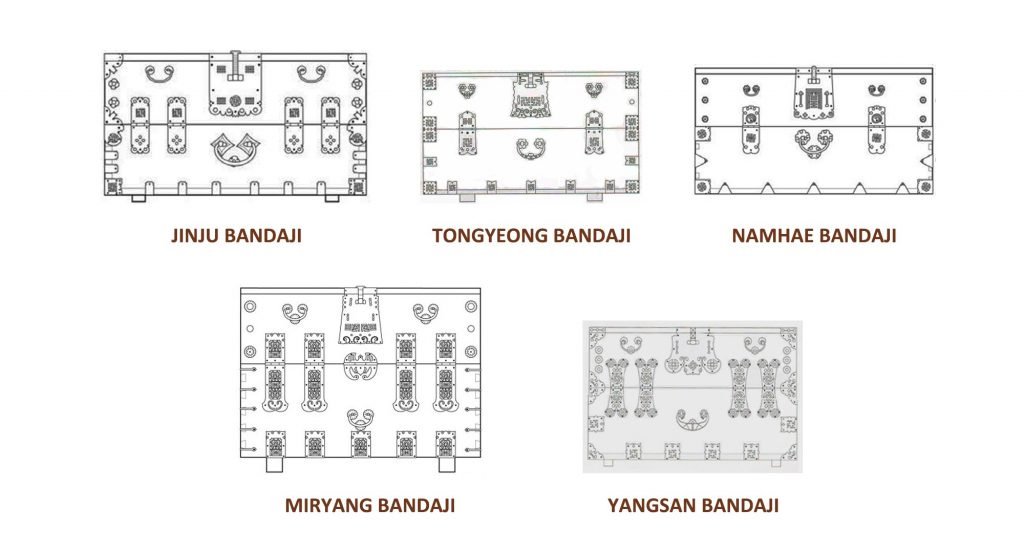
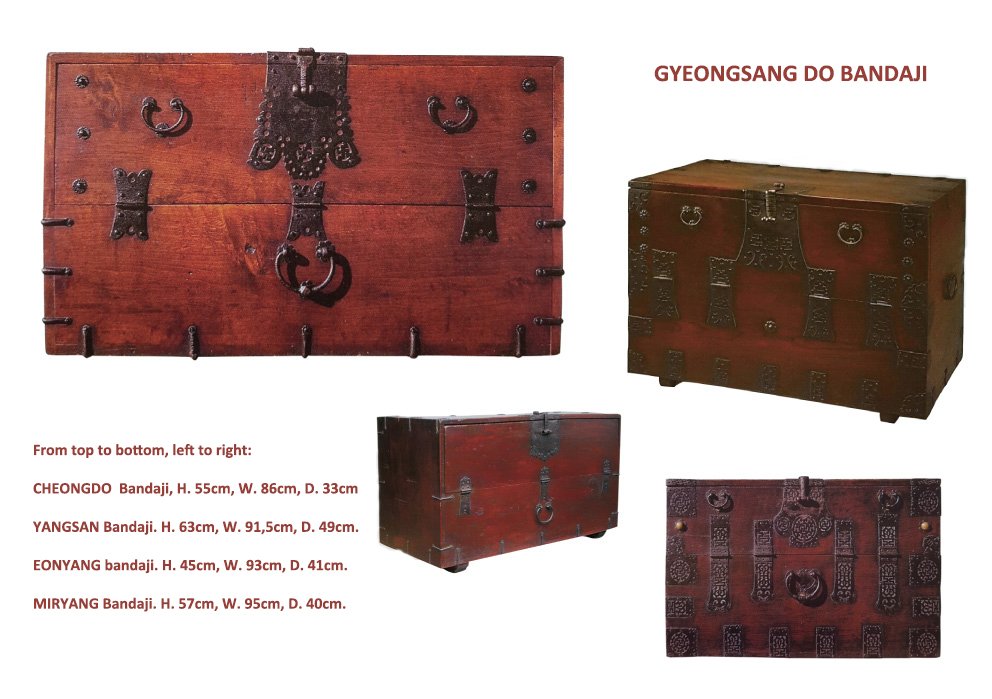
THE NORTHERN PART – GYEONBUK.
As mentioned, Bandaji from the northern part of Gyeongsang Do province tend to be larger. The average dimensions are as follows: Height (H) – 60 to 75cm, Width (W) – 85 to 110cm, Depth (D) – 33 to 40cm. These Bandaji are constructed using thick wood panels and are adorned with minimal, simple metalwork fittings without excessive decoration. Here, the emphasis is on simplicity.
SANGJU BANDAJI. 상주시; 尙州市
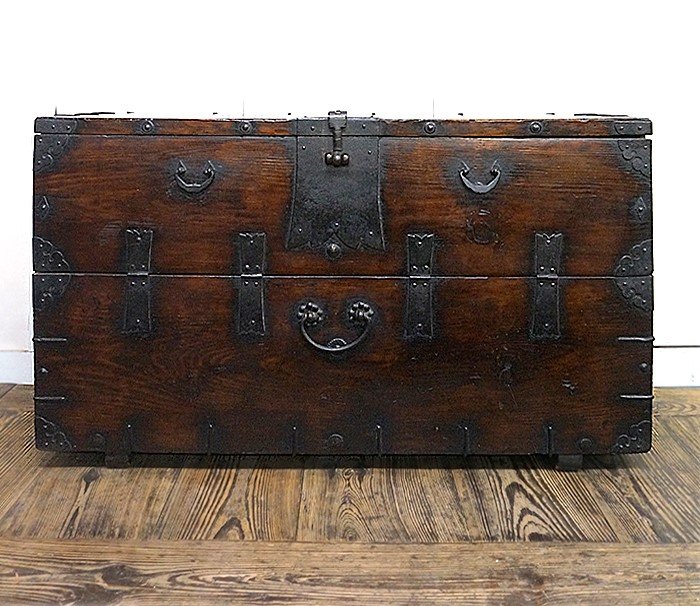
Red pine wood, iron fittings, oil finish. Probably late 19th century. H. 66cm, W. 116cm, D. 43cm. Private collection.
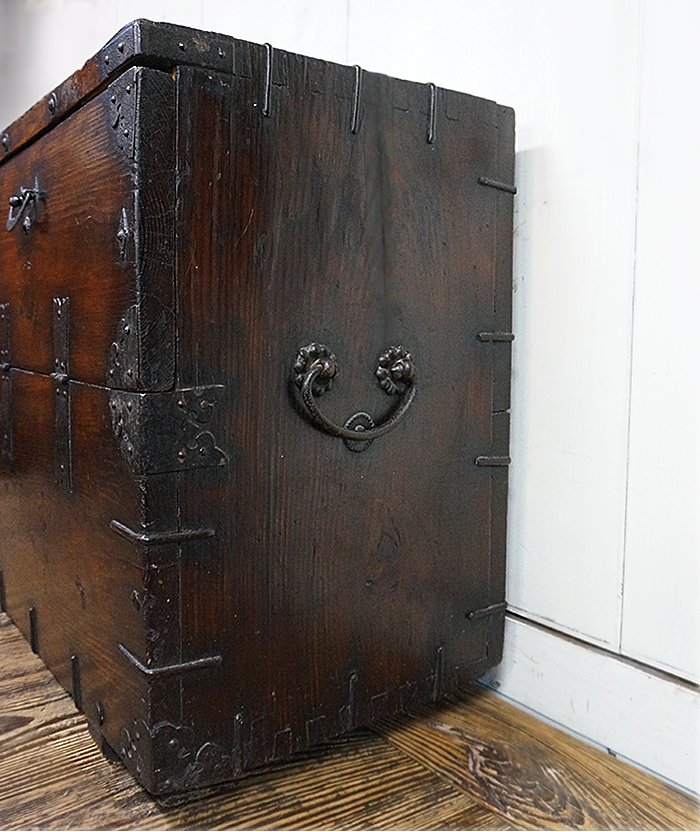

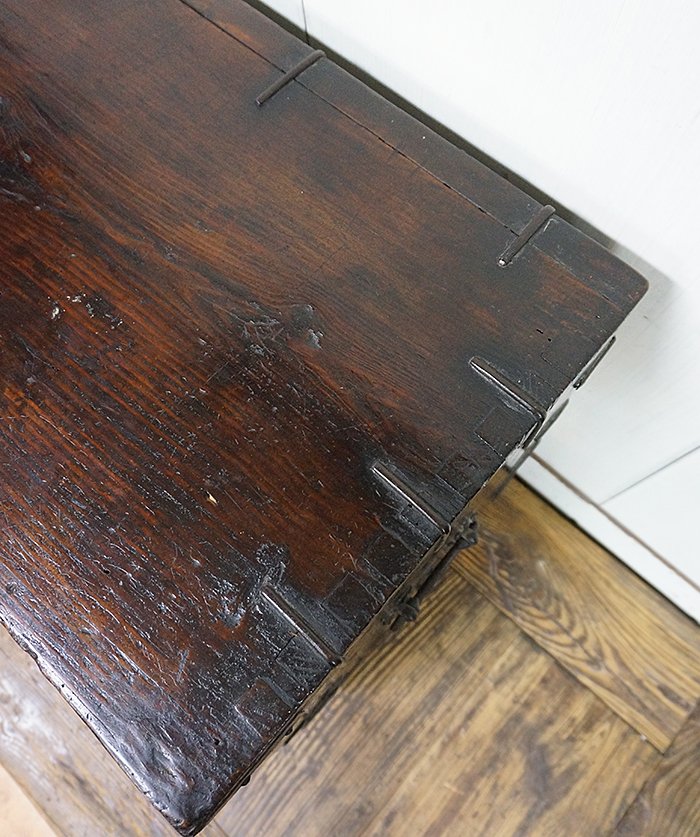
Bandaji found in the Sangju area are constructed with thick wooden panels, making them quite heavy. They feature limited and simple metalwork decorations. The handles are shaped like bats, and the plates are often plain without intricate decorations or incisions. On the front part, corner plates display flower patterns. In terms of their overall design, these Bandaji tend to be wider than they are tall, and they are primarily made from red pine.

Collection: Daegu University Central Museum.
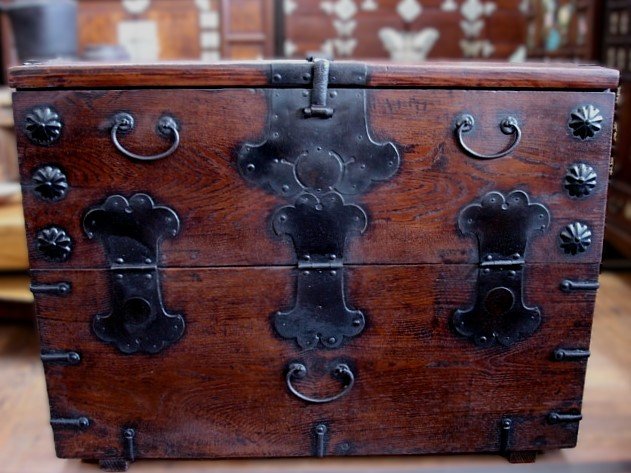

ANDONG & GYEONGJU BANDAJI. – 안동시; 安東市 & 경주시; 慶州市

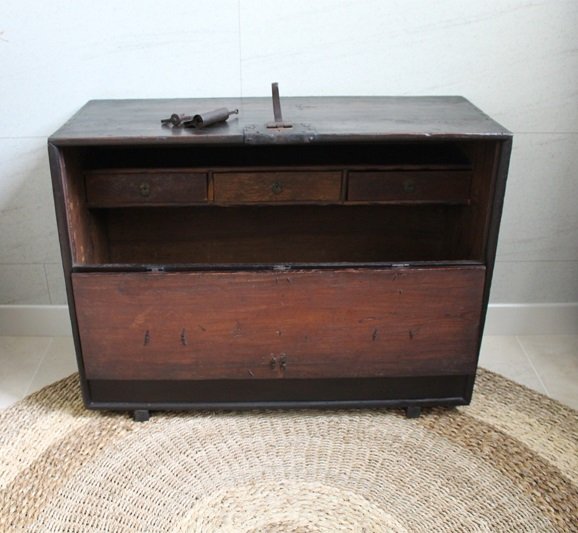

Andong is the capital of North Gyeongsang Province (GYEONBUK). It is renowned as a hub of culture and traditional art. In this region, Bandaji chests have a similar size to those in other parts of the peninsula but are not as tall. The measurements of this chest are as follows: Height: 62cm, Width: 82cm, Depth: 33cm. Constructed with thick red pine wood and covered with a very dark stain, the front design resembles pieces from Gangwon Do Province, with top, side, and bottom panels forming a frame around the front of the chest. The metalwork on it is quite simple, often featuring hinges in the shape of swallowtails, reminiscent of those found on Gochang Bandaji in Jeolla Province.
The accompanying photo displays a Bandaji from Andong, characterized by minimal and straightforward metalwork plates and fittings, without any incised motifs.
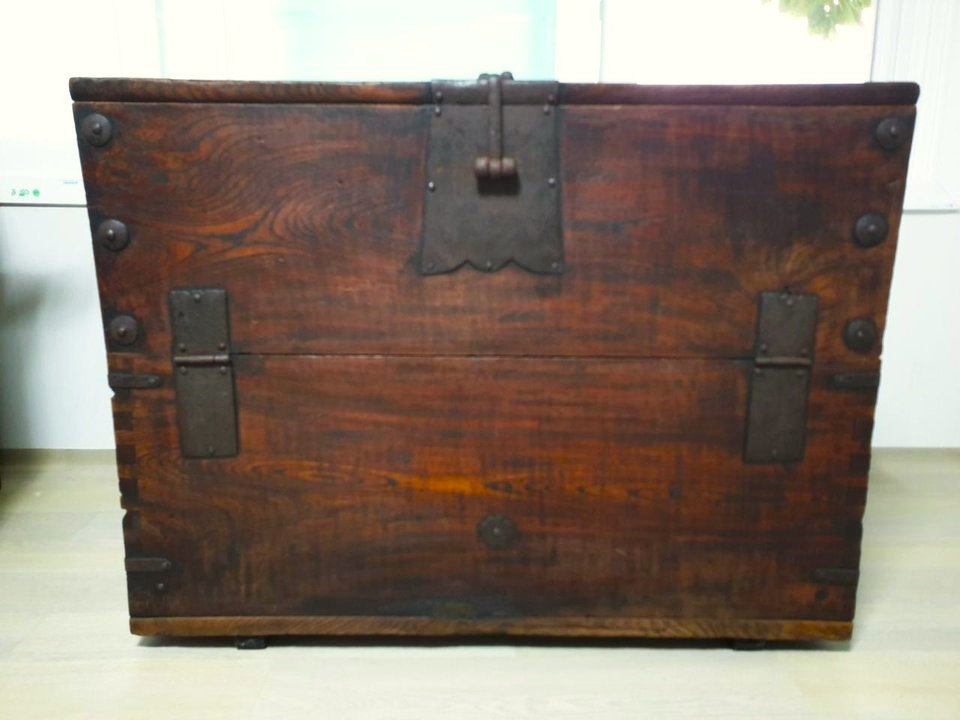
Red pine wood, iron fittings oil finish. 19th century. Private collection.
YECHEON BANDAJI. 영천시; 永川市

Collection: Busan Metropolitan Museum of Art
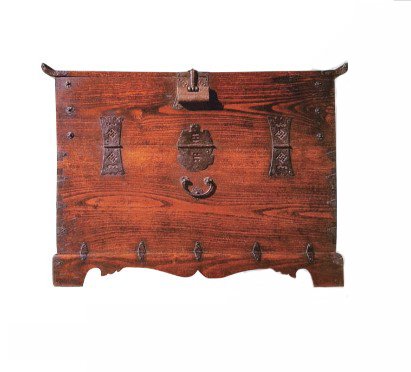
H. 71,5cm, W. 99cm, D. 44,5cm.

With a top plate rising at both ends. The shape of the metalworkis include typical motifs of a turtle in the center and a wine bottle on both sides. Collection: Yecheon Museum.
The most distinctive feature of Yecheon Bandaji is its large turtle-shaped hinge in the center, symbolizing longevity. Additionally, it possesses a unique spatial sense commonly associated with the Jeolla Province. Metalwork decoration is limited to simple flat iron reinforcement corner plates and nails. Another characteristic is the longer, raised top panel on both sides. These chests often stand on intricately designed legs.

Collection: Yecheon Museum

Collection: Yecheon Museum
CHEONGDO BANDAJI. 청도
Cheongdo Bandaji has the distinct feature of being constructed with a frame similar to those found on Gangwon-do Bandaji. However, the difference lies in the fact that the front surface is flat, unlike the Gangwon-do Bandaji, where the sides protrude from the front surface.
This furniture is also adorned with minimal metal parts, though they are more intricate than the Bandaji of Sangju. Another notable detail is the front part of the cabinet, where the flap covers almost half of the cabinet’s surface.
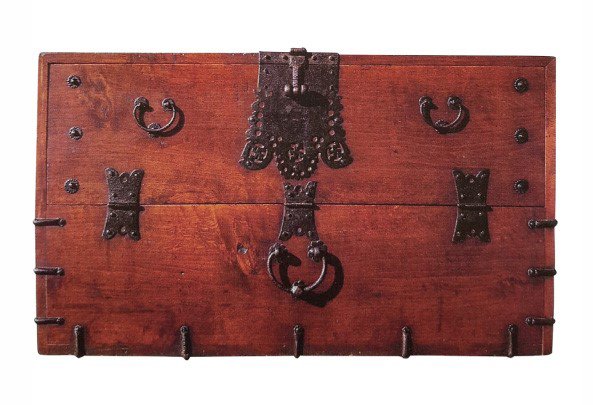
H. 55cm, W. 86cm, D. 34cm. Private collection.
THE SOUTHERN PART PART – GYEONGNAM.
MIRYANG BANDAJI. 밀양시; 密陽市

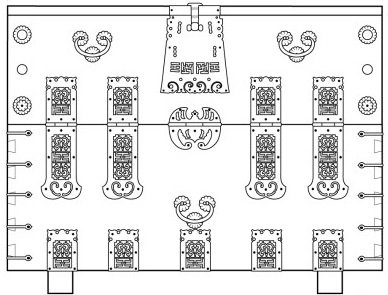

Miryang Bandaji, originating from the Miryang and Chinju regions of “Gyeongnam” Province, is typically crafted from red pine. Higher-quality pieces may use zelkova wood.
The standard dimensions of a Miryang bandaji are 50 to 60 cm in height, 65 to 80 cm in width, and 35 to 45 cm in depth. These chests often feature decorative elements, including intricate metalwork, with some areas deliberately left uncovered to showcase the fine wood grain.
As for the metal decorative motifs, there are abbreviated hinges in the shape of “bullocho,” and the straight shapes of the characters 卍 or 亞 are particularly eye-catching.
Among these motifs, many feature flower prints, with the chrysanthemum-shaped lock plate (廣頭釘) being especially ornate. Similar to the Pakchon Bandaji from the northern region of Korea, moon-shaped handle bolts are affixed to the sideboards on both sides of the door plate or to the middle board of the lower part. Pine is the primary material used, while beautiful zelkova wood is often employed for the chest’s front section.
Metalwork on Miryang bandaji features intricate openwork decorations.
Miryang bandaji is highly sought after and increasingly rare to find in its original condition nowadays. These chests are typically small in size, especially compared to other bandaji styles. Despite their abundance of metal decorations, they exude a rustic charm by showcasing the unique patterns of the fine wood grain.
These bandaji often feature four hinges to secure the front panel, and they are elongated with numerous incised motifs. Notably, robust iron hinges with decorative piercing are a distinctive hallmark of Miryang Bandaji. The design of “Manja” 卍 is frequently employed to adorn the front, often with a large metal lock plate and door fittings.
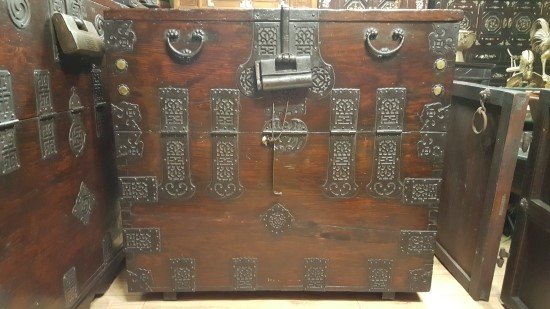
H. 83cm, W. 88cm, D. 43.5cm.
Special feature four hinges are placed on the left and right of the central hinge.
Collection of the Folk Museum of Korea.



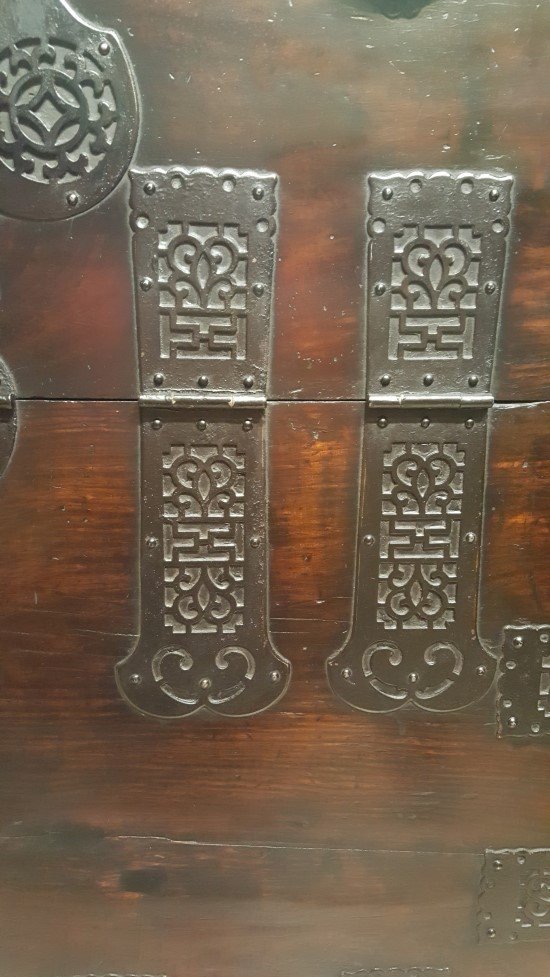
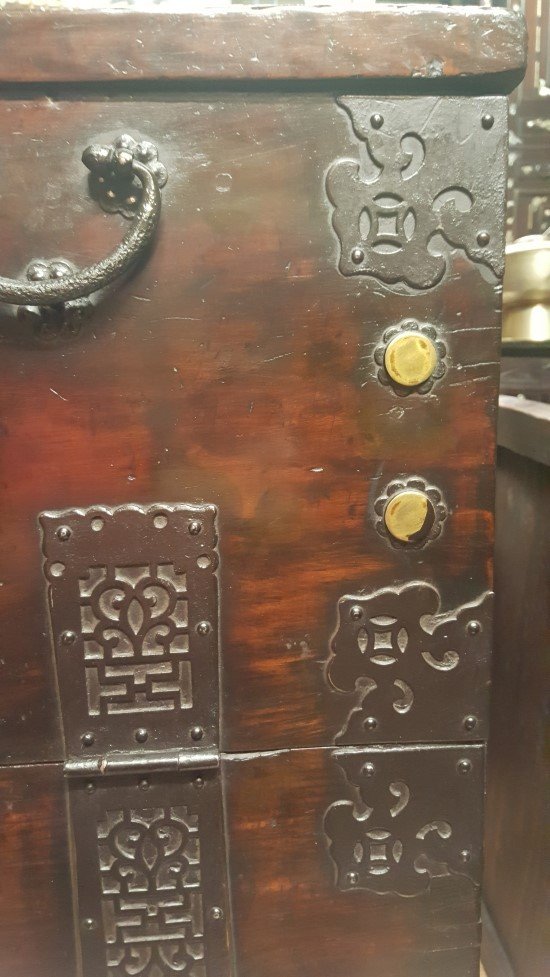


H. 58,2 cm, W. 95,8cm, D. 49,3cm. Korea Cultural Heritage Photography Research Institute
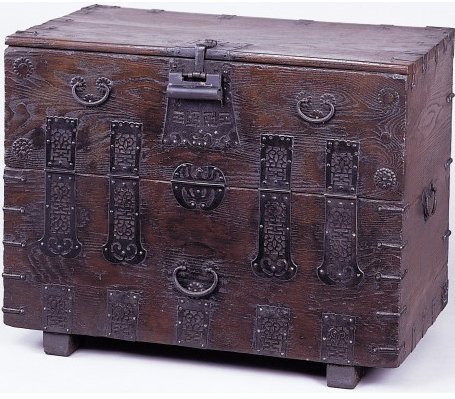
Collection: National Folk Museum of Korea
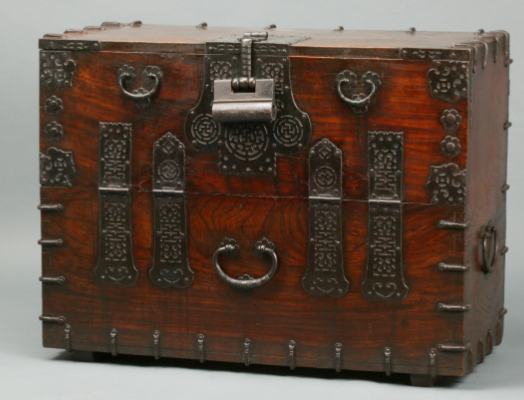
oil finish.
Collection: National Folk Museum of Korea.

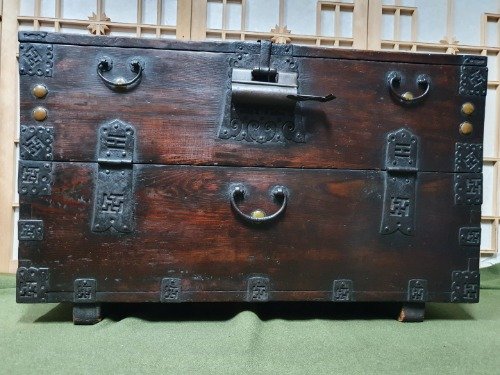
H. 60cm, W. 110cm, D. 42cm.
Private collection.

H. 61cm, W. 100cm, D. 46cm. Private collection in Korea.






Body is old however iron fittings have been changed.








NAMHAE BANDAJI. 남해군; 南海郡


Namhae bandaji chests are also characterized by their low and wide dimensions. Metal decorative motifs commonly feature the Taegeuk symbol on the upper part of the hinge, as well as the piercing of the Chinese character 福 on the front surface. The flat corners are often either triangular or occasionally square, featuring wide incisions.

Private collection.

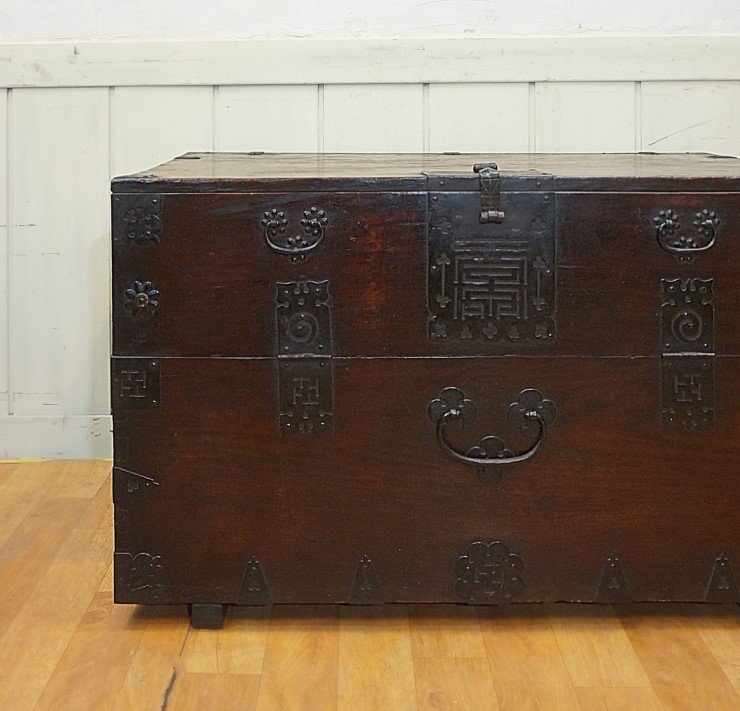
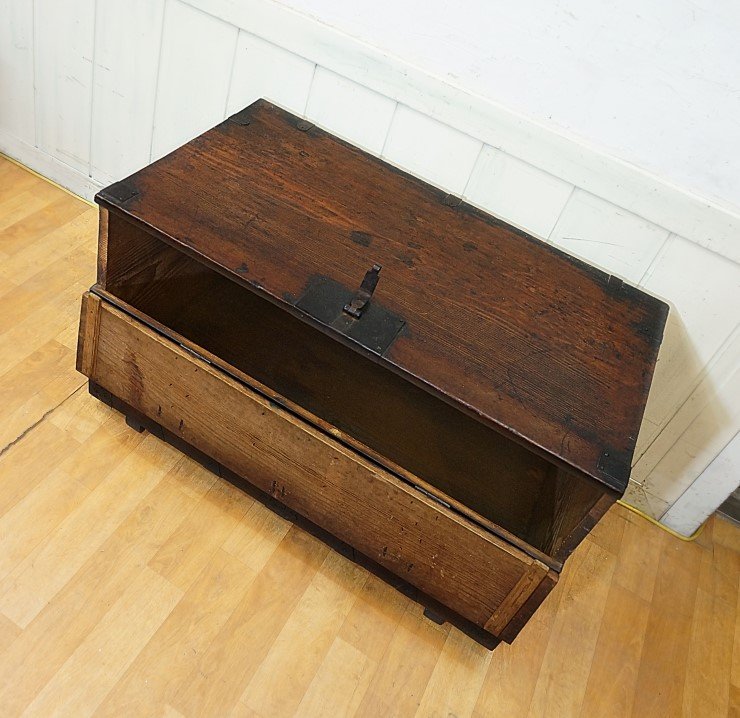
The distinctive feature of Namhae Bandaji is the presence of the “bok” (福), “su” (壽), which symbolize longevity and good fortune, and health signs, often embroidered on the front hinges. The “manja” (卍) design is also typically incised on the front lock plate and the hinges. In addition, the “Taegeuk” pattern is commonly seen on the hinges.

National Folk Museum of Korea
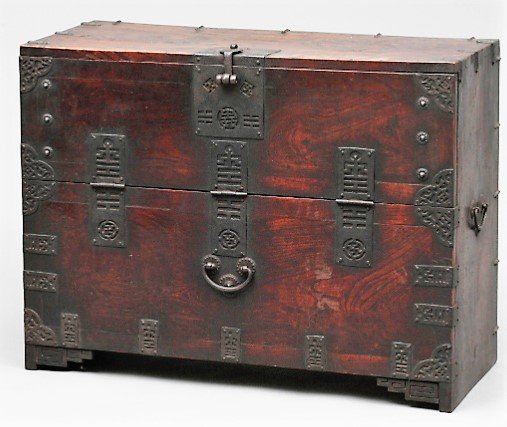
Square iron pattern lock plate and fittings engraved with Buddhist motifs.
Collection: National Folk Museum of Korea

TONGYEONG BANDAJI. 통영시; 統營市

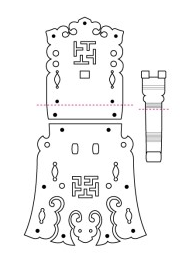
In 1995, Chungmu City and Tongyeong County were amalgamated to form the Tongyeong City as it is known today.
Tongyeong and Chungmu bandaji often feature silver components, and the front part is distinguished by its intricate wood texture. The large lock plate is typically fan-shaped and adorned with Yeouiju (여의주) or bat patterns, making it one of the most popular bandaji styles with a “manja” design. The designs of Manja, Yeouiju, and bats are known for their splendid and ornate characteristics.
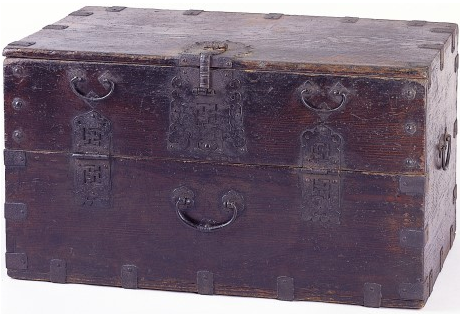
Late Joseon Dynasty, dark stain on wood, iron fittings.
Collection: National Folk Museum of Korea
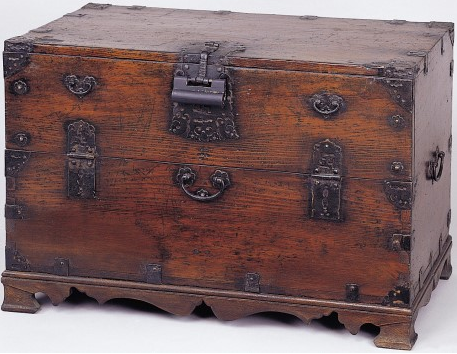
Late Joseon Dynasty, Red pine wood, iron fittings, oill finish.
Collection: National Folk Museum of Korea






The front lock plate is engraved with the character 卍 in a modified form of a swallowtail pattern.
The hinges have a variation of the bat design. It shows the typical characteristics of Gyeongsang-do Bandaji with a wide structure compared to its height.

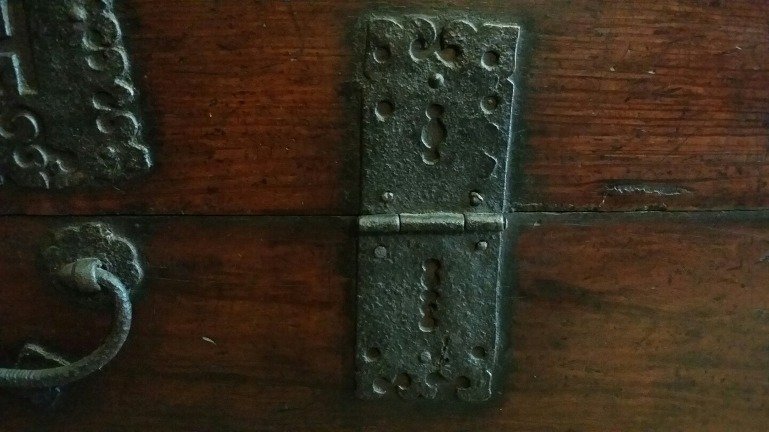
GIMHAE BANDAJI. 김해시; 金海市

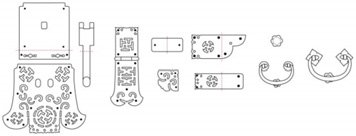
Gimhae Bandaji is distinguished by its lock plates adorned with cloud motifs and intricate swallowtail fittings, all elegantly engraved with stylized Manja motifs. This style is further characterized by the use of brass metalwork on some parts.
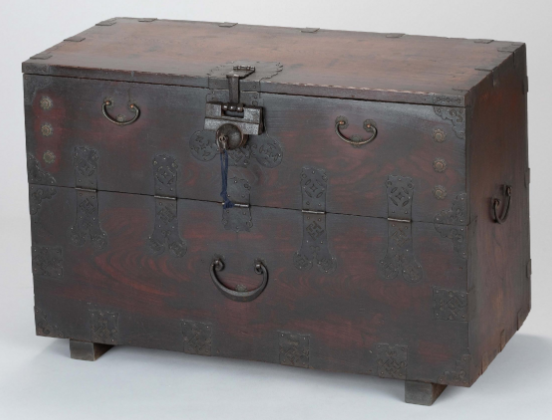
Collection: National Folk Museum of Korea

Elm wood. Late 19th century.
Collection Gimhae Folk Museum.

Late Joseon Dynasty. 19th century.
H. 67cm, W. 85cm, D. 36cm.
Collection: Old Story Antique Furniture, Korea.

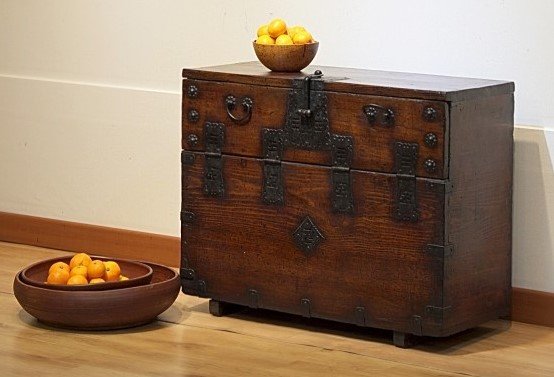

Collection: National Museum of Korea.

Collection: National Museum of Korea.



Collection: Gimhae Wood Culture Museum.
YANGSAN BANDAJI. 양산시; 梁山市
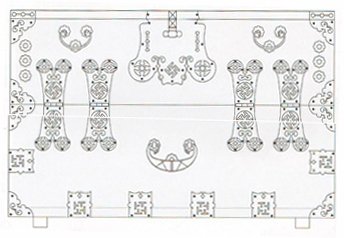
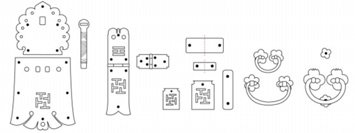
Yangsan Bandaji is renowned as the most popular and expensive type of Bandaji in this province. As depicted in the pictures, typical Gyeongsang-do Bandaji chests are known for their thick and splendid metalwork finely incised with various motifs, including stylized Chinese patterns like double happiness, Manja, and Taegeuk motifs. Their overall shape is low and elongated, making them easily recognizable. These chests are crafted from fine-grained wood such as Zelkova or high-quality red pine.

Low bandaji made of elm wood with iron fittings. The lock plate features a motif of the elixir of immortality (Photo right), and the middle panel fittings have a swallowtail design.
Collection: Seoul Museum of Craft Art.

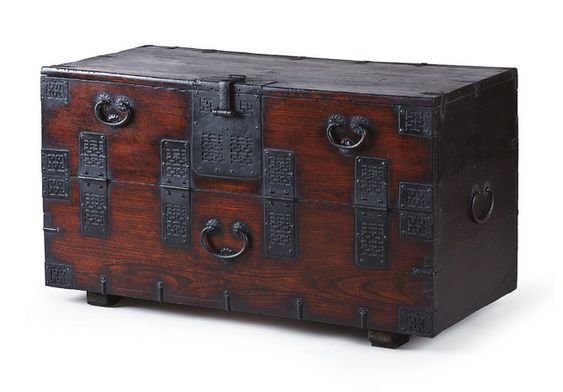
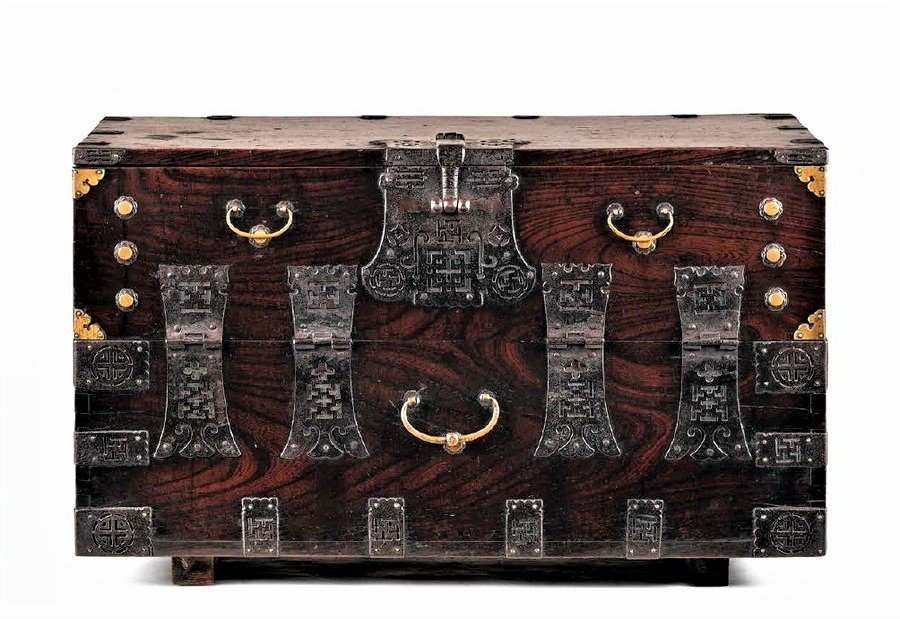
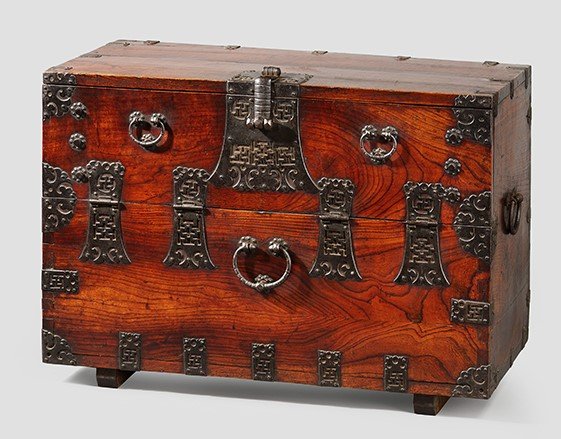
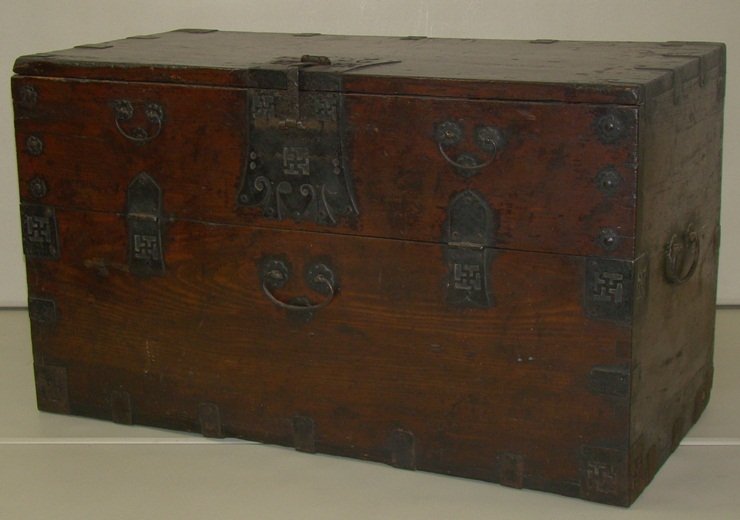
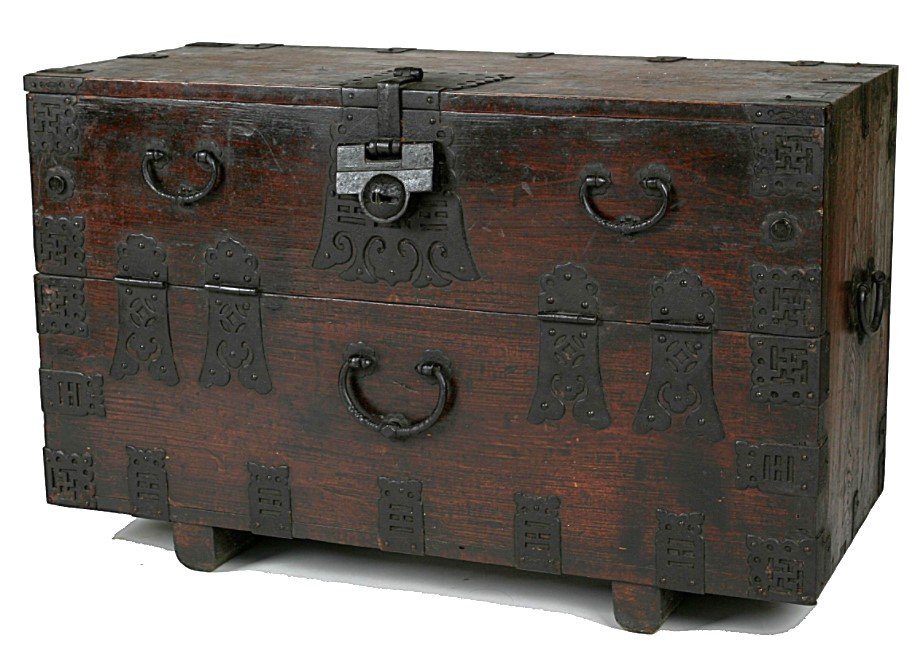
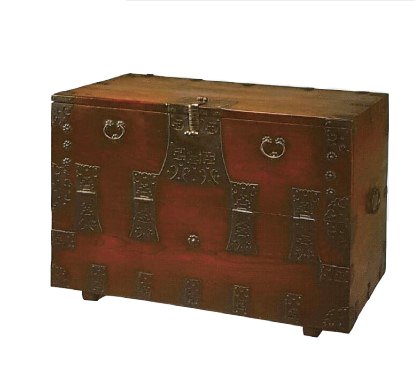
H. 63,4cm, W. 91,4cm, D. 49cm. Private collection.
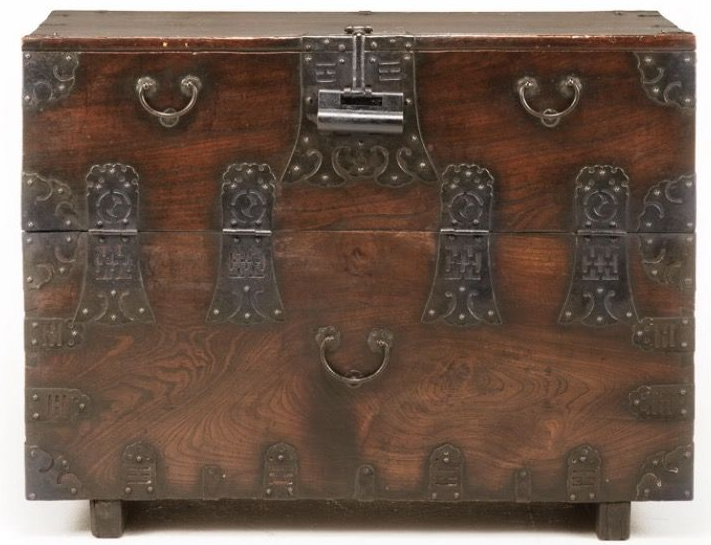

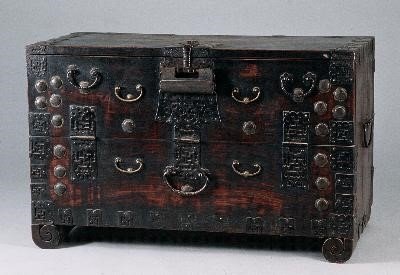
H. 57,9cm, W. 91,5cm, D. 44,8cm.
Collection: National Museum of Korea.

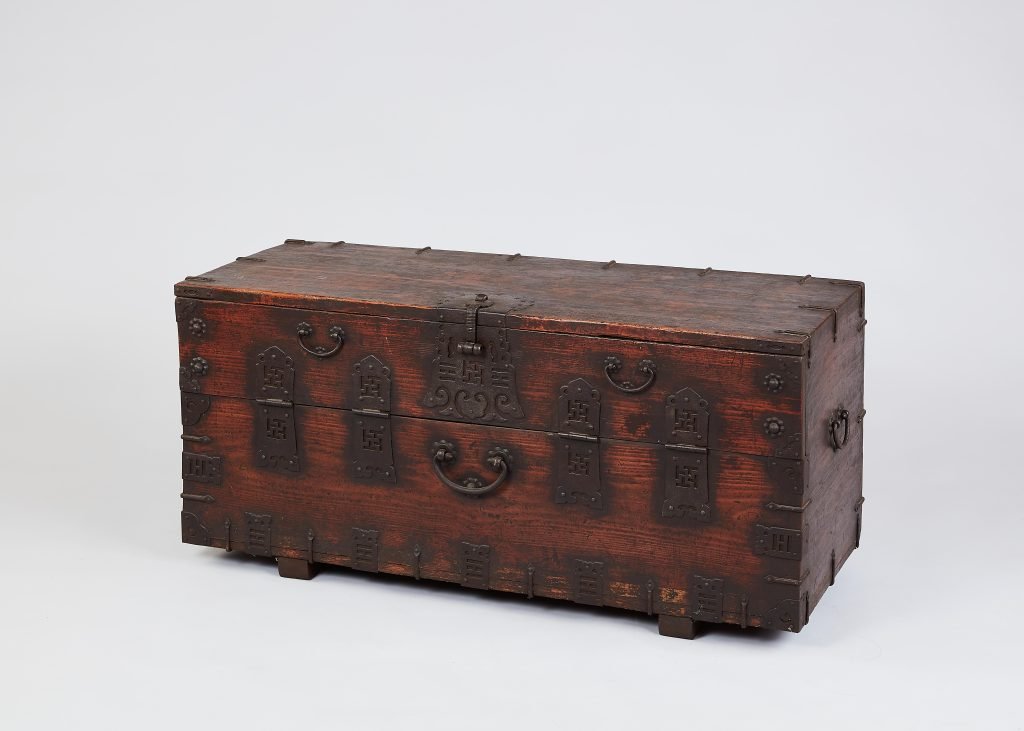
Collection: Hwaseong History Museum, Korea.



EONYANG BANDAJI. 언양
Compared to other pieces, Eonyang bandaji features relatively limited metalwork decoration.
The Eonyang Bandaji is characterized by its front lock plate in the shape of clouds. However, it stands out due to numerous unique open holes adorned with various auspicious motifs. The hinges (usually 2 to 4 pieces) connecting the door plate and front panel are typically rectangular in shape. Simple C-curve iron handles are affixed, with two on the top opening panel and one at the bottom center of the chest, mounted on small flower plates. Additionally, the corner plates at the bottom of the chest feature a “Gamja” pattern.








Collection: Ulsan Museum
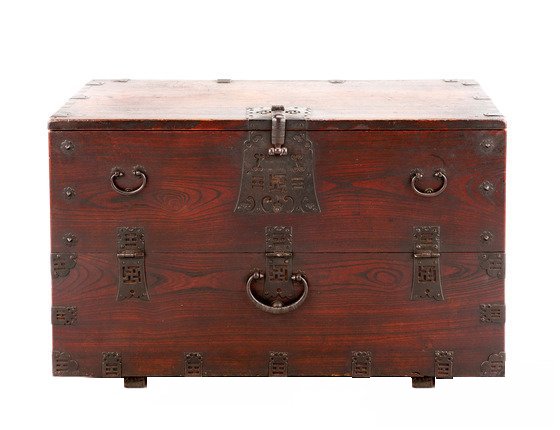
Early 20th century. Collection: Ulsan Daegok Museum.

Private collection.
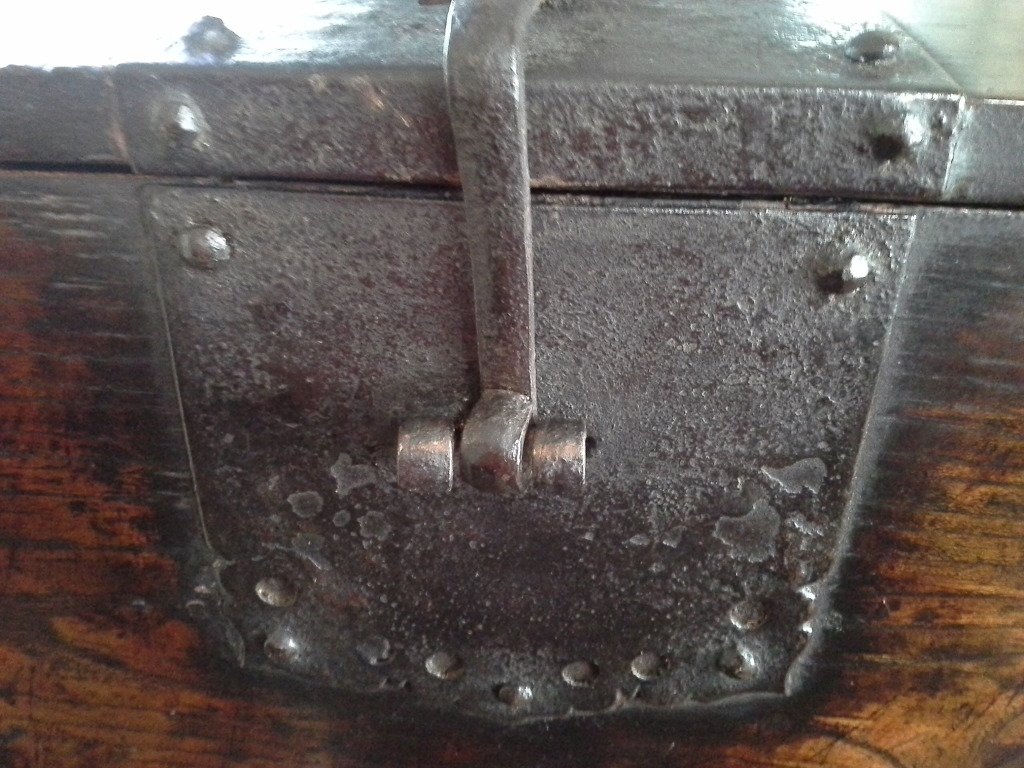

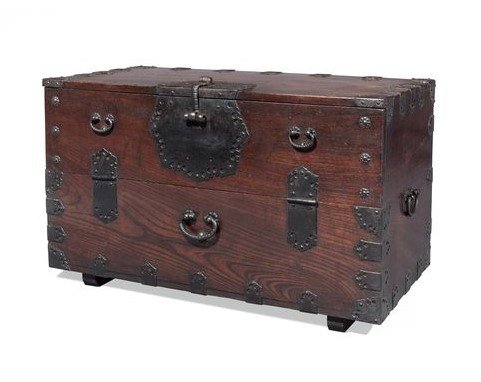
19th century. H. 62cm, W. 95cm, D. 49cm.
K Auction, Seoul, Korea.
JINJU BANDAJI. 진주시; 晉州市

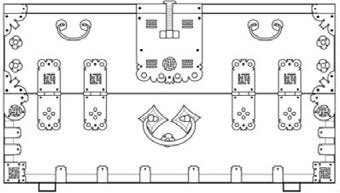

In Jinju, the front plate and hinges are adorned with patterns of owls or cicadas. Additionally, the belly button ornaments in Jinju are distinctive for their large, decorative design and are attached to thick, bold star nails. These star nails are a common feature on these chests, typically positioned on the front and sides to serve as pullers. They are also referred to as “diamond” shape nails, which can also be found on Jeju bandaji from the neighboring Jeolla province.





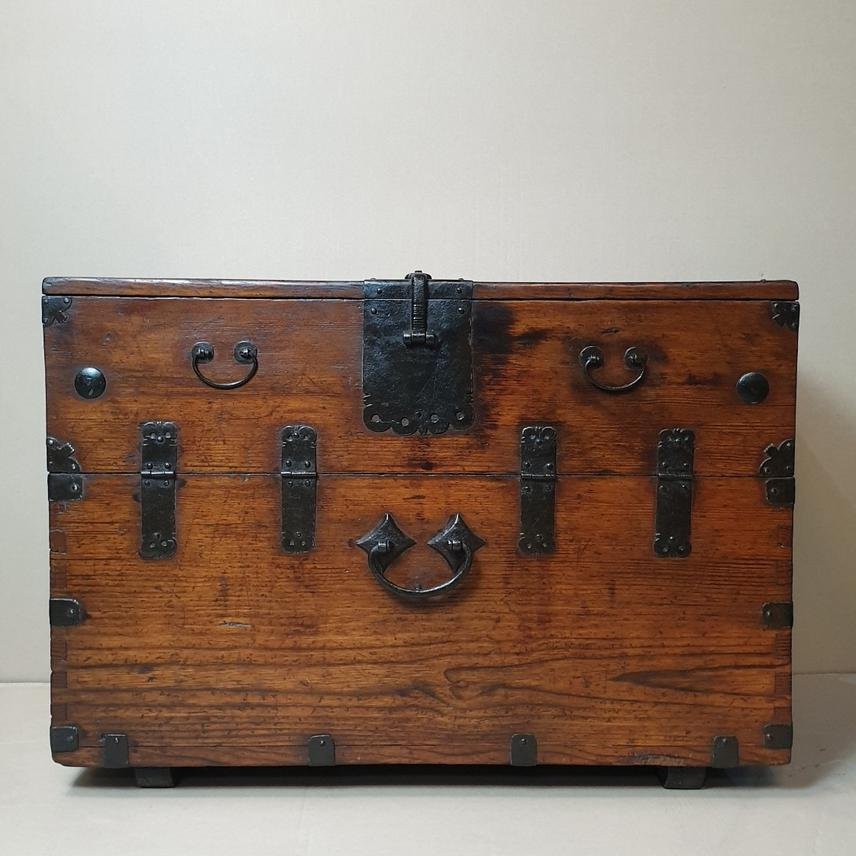
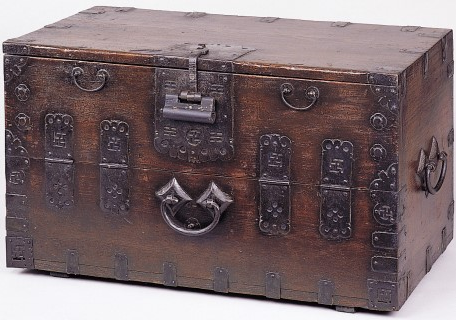
Collection: National Folk Museum of Korea
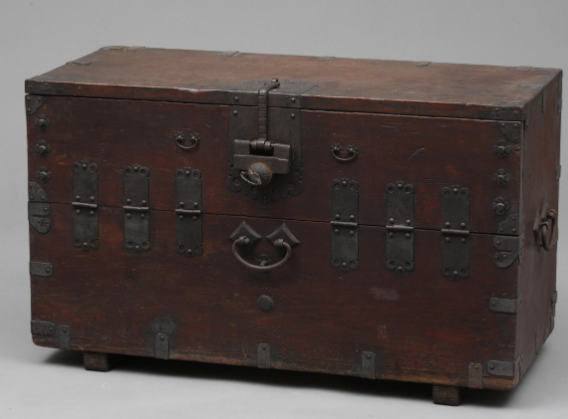
Collection: National Folk Museum of Korea
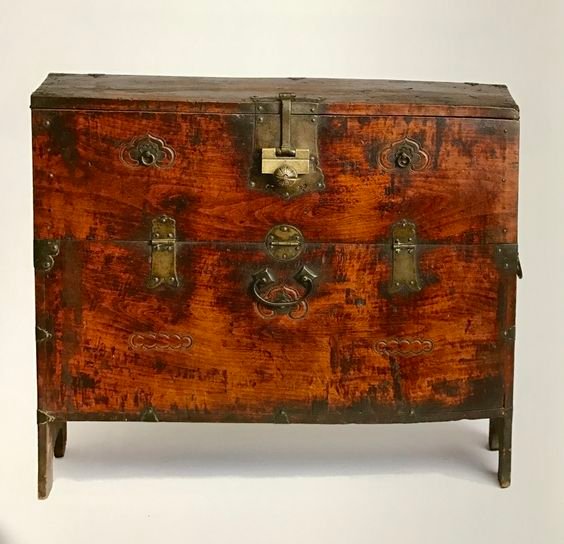
This fine piece was probably used by a noble. With its shallow depth (30cm), unusual yellow brass fittings. Decorative pattern of the Ruyi motif engraved on the wood itself under the pullers. At the difference of other traditional furniture from Jinju area, this Book Bandaji is quite high and raised on high legs.

H. 55cm, W. 102,5cm, D. 40cm. Private collection in Korea.
This piece is unique first by its dimension, Low and narrow and the three top drawers. It was mainly used to store books and documents. Metalwork design indicate that It is originated from Jinju area. Very rare piece. Private collection.
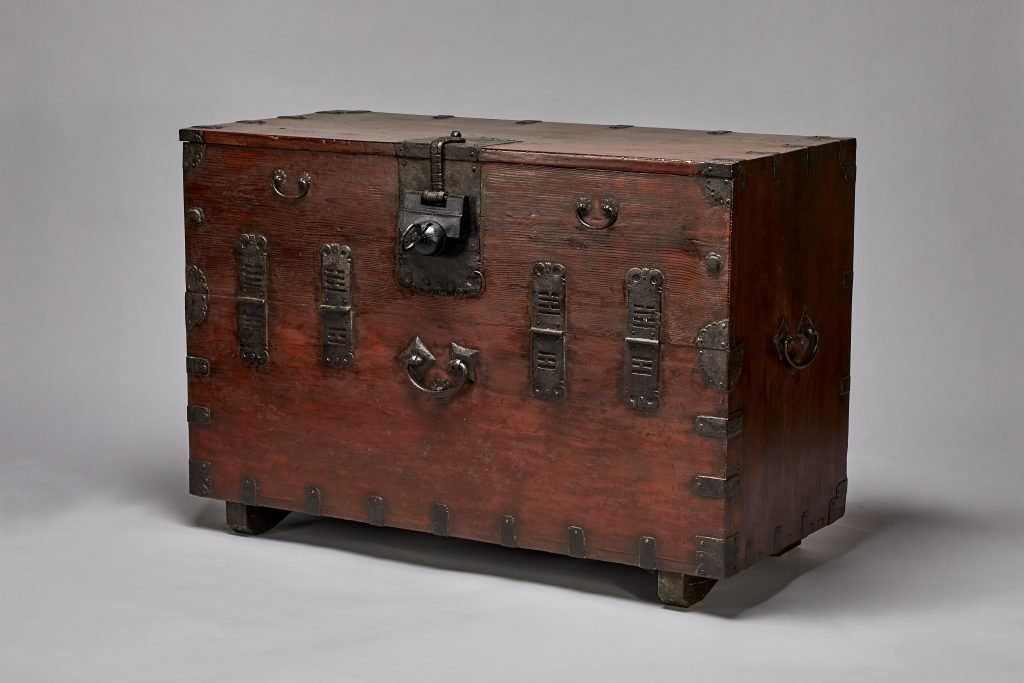
H. 78cm, W. 114cm, D. 51cm.
Collection: Namgaram Museum, Korea.
This is a Gyeongsang-do bandaji made of pine wood. It features cicada-shaped hinges and a handle attached to diamond-shaped plates in the front center, which are characteristic of bandajis from the Jinju area in South Gyeongsang Province. The front panel is of a general type, constructed from a single piece of wood. Inside, it is a shelf type, with a shelf positioned in the upper part when the door panel is opened.
In the center of the door panel, the lock plate is square, while the lower part is cicada-shaped. Additionally, there are cicada-shaped corner decorations on all four corners of the door panel. The exterior of the four hinges resembles a cicada, with a symmetrical design on both top and bottom, while the interior features openwork patterns such as the Eight Trigrams and the Taegeuk.












Cheers